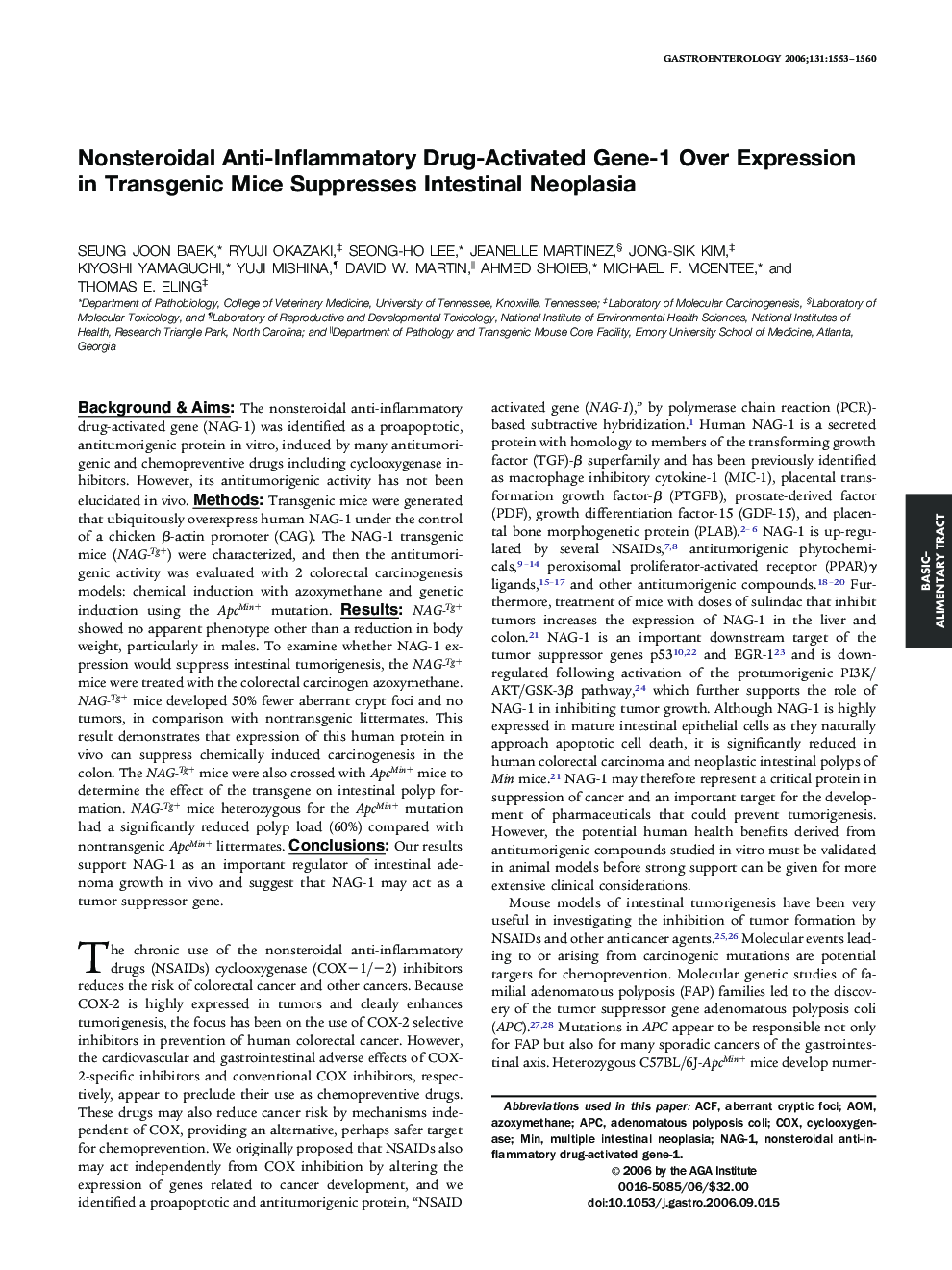| کد مقاله | کد نشریه | سال انتشار | مقاله انگلیسی | نسخه تمام متن |
|---|---|---|---|---|
| 3299806 | 1209937 | 2006 | 8 صفحه PDF | دانلود رایگان |

Background & Aims: The nonsteroidal anti-inflammatory drug-activated gene (NAG-1) was identified as a proapoptotic, antitumorigenic protein in vitro, induced by many antitumorigenic and chemopreventive drugs including cyclooxygenase inhibitors. However, its antitumorigenic activity has not been elucidated in vivo. Methods: Transgenic mice were generated that ubiquitously overexpress human NAG-1 under the control of a chicken β-actin promoter (CAG). The NAG-1 transgenic mice (NAG-Tg+) were characterized, and then the antitumorigenic activity was evaluated with 2 colorectal carcinogenesis models: chemical induction with azoxymethane and genetic induction using the ApcMin+ mutation. Results:NAG-Tg+ showed no apparent phenotype other than a reduction in body weight, particularly in males. To examine whether NAG-1 expression would suppress intestinal tumorigenesis, the NAG-Tg+ mice were treated with the colorectal carcinogen azoxymethane. NAG-Tg+ mice developed 50% fewer aberrant crypt foci and no tumors, in comparison with nontransgenic littermates. This result demonstrates that expression of this human protein in vivo can suppress chemically induced carcinogenesis in the colon. The NAG-Tg+ mice were also crossed with ApcMin+ mice to determine the effect of the transgene on intestinal polyp formation. NAG-Tg+ mice heterozygous for the ApcMin+ mutation had a significantly reduced polyp load (60%) compared with nontransgenic ApcMin+ littermates. Conclusions: Our results support NAG-1 as an important regulator of intestinal adenoma growth in vivo and suggest that NAG-1 may act as a tumor suppressor gene.
Journal: Gastroenterology - Volume 131, Issue 5, November 2006, Pages 1553–1560